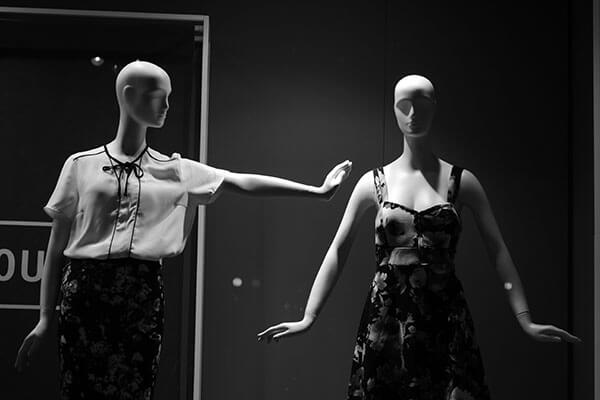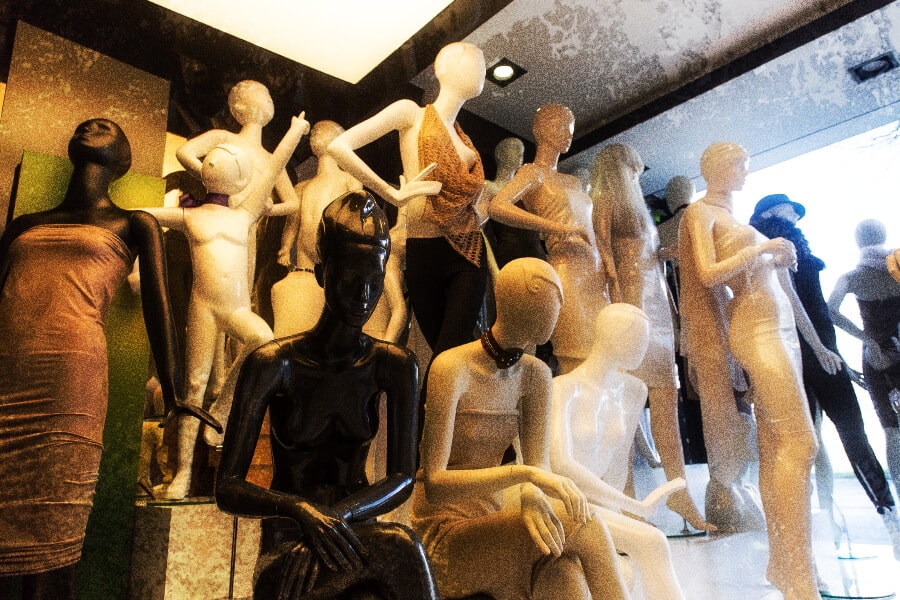It’s no secret that department stores are on thin economic ice, thanks to Amazon and the ease of online shopping. But are we coming to a point where, like rotary phones and magazine subscriptions, department stores will become a quaint 20th-century memory? I can’t even imagine it. What would be lost without these bulwarks of consumerism? I suspect quite a bit.
I grew up near Paramus, New Jersey, a community known nationwide as the birthplace of the modern suburban shopping mall; department store shopping is part of my DNA. My mom and I would often head over to the mall just to window shop. I didn’t know it then, but those trips, which started when I was a young girl and didn’t end until my mom’s cancer diagnosis when I was in my early 30s, became the backdrop for a mother–daughter connection that would forever guide my life.
“I’ve got champagne taste and a beer budget,” my mom used to joke as we pushed dress after dress across a rack, pausing at the beautiful frocks that exceeded our means. As we browsed, my mom imparted her wisdom: “That’s a ‘Roz’ dress,” she would say with a wink about a low-cut, tight-fitting shift bedecked with sequins or feathers on a nearby mannequin. Without another word, I’d know immediately that this dress was not our taste. Roz, mom’s divorced cousin, who was thin (and on the prowl), would think nothing of wearing that tarty number, but it was not the kind of dress we would wear. We were much too dignified for that.
Read More: 26 Holiday Gifts for Women Who Are Traveling Boldly
Bonding, Department by Department
The lessons of taste were not limited to garments. From dresses, we would head to the china department. My parents never owned “good” china, so it was another place to imagine. Eyeing the Wedgwood and Lenox patterns, my mom and I debated the merits of each, envisioning them adorning the table for holidays or fancy parties. Even though we were Jewish, I even had a favorite Christmas china pattern: the Spode Christmas Tree.
Through our tours of tableware, my mom made it clear that even if you didn’t have the perfect place setting, filling your house with family was the most important thing—always, she said, be a hostess who goes out of her way to welcome guests, make them comfortable, and share what she has. But it would be nice, she often said with a sigh, to have special plates. In those moments, I learned that my mother hoped I’d have a life a bit different from hers—a life that included fine china.
I learned that my mom hoped I’d have a life a bit different from hers.
After china came the “notions” department, where we peered at hundreds of packages of buttons, ribbons, and sewing knickknacks. The notions department disappeared years ago, but in it, my mom gave me an appreciation of how you could salvage a coat with new buttons or save a pair of your husband’s sweatpants by threading new elastic through the waistband.
Next, we’d visit the housewares department—full of peelers and other gadgets. There, at Bamberger’s, my mother had found her beloved cookie jar, a ceramic, house-shaped one. Over the painted-on door at the front of the house, a sign read, “Cookie House.” Or so it seemed until you looked more closely: In a made-in-China “oops,” the sign actually said, “Cookle House.” Mom laughed when she spotted the mistake, got a great deal on the jar, and always felt that she had aptly captured our own house—perfectly normal looking from the outside, but flawed and a little kooky if you looked more closely. I remember how we nearly cried when that silly cookie jar was smashed to smithereens many years later by our flawed and kooky Irish Setter.
Dressing Room Drama

Image: Viktor Talashuk/Unsplash
Of course, there were times we went to the department store to actually buy things. I stood in the dressing room; mom sat on the little chair inside it, judge and taste arbiter. “Take it off,” she’d say abruptly about the things she didn’t like, sparing me any indecision. She would hang the rejects and run out for other sizes as needed. As I became a teenager, I remember some rough times in that dressing room—times when our camaraderie nearly turned to combat over what I wanted to wear. “Too low-cut,” she’d say. Or, “You look like a cheap prostitute.” Once, when we shopped for a dress to wear to a fancy Bar Mitzvah, everything I tried was too tight. When I became stuck in a dress I couldn’t pull off, I began to cry.
I remember some rough times in that dressing room, times when our camaraderie nearly turned to combat.
“I’m fat,” I said, my voice muffled by the fabric over my face. “I’m fat and ugly, and none of these clothes look good.”
“Don’t ever say that,” my mother retorted in a sharp voice as she pulled the ill-fitting garment off of me. “You are neither fat nor ugly, and we will find something.”
She left me standing in my underwear, tears streaming down my cheeks as she exited the dressing room. A few minutes later, she returned with more dresses. It seemed that we’d been shopping in the girls’ 7-14, when really what I needed was to move to the juniors’ department. Suddenly, I was seeing myself differently as dress after dress became possibilities. We left with a deep purple maxi covered in petite yellow flowers—pure ’70s chic. I felt the anger leave my body, replaced by gratitude and exhaustion. No, I was not fat. I had simply developed boobs and hips and needed to accommodate them.
Our shopping trips often ended in gratitude and exhaustion. Maybe that’s because we were doing more than just shopping. In the department store, my mom inculcated in me her sense of taste, decorum, and style. She schooled me in her values, financial sense, restraint, and sometimes, determination. Mostly, though, my mom let me, her only daughter, into her world. Within the walls of Macy’s®, Ohrbach’s, Sterns, Gimbels, or Lord & Taylor®, I learned what she yearned for. I saw her vision for me and for herself, and I understood her better. There was an intimacy to shopping with mom in a big department store—one that I wouldn’t have traded for a million “lunch dates” at some restaurant.
What We’re Losing without Department Stores
These days, my adult daughters live in different cities and prefer to shop online. Suddenly I’ll get a text with a link: “What do you think of these shoes?” Or, “Do you think I could wear this to the wedding?” I give my opinion willingly, and when the ordered merchandise arrives, there’s another text with a picture of one daughter or the other wearing the very dress I’d seen on a model a few days before. Now my opinion is needed again: “I’m not sure if I like this.” Or, “I got the dress!” I can usually answer with a thumbs up, but it doesn’t feel quite the same.
Within the walls of Macy’s . . . I learned what [my mom] yearned for.
So, whenever I can, I grab one or the other of my kids and take them to the department stores. They have no idea the memories it conjures for me, but in my heart I know my late mom is with me when I run for a size or sit on the seat in the dressing room and say, “Take it off.” And I’m always thrilled when I can say, “I love it!”
My kids don’t really need me to shop with them. Maybe they had enough shopping in their youth to learn the lessons I was unwittingly teaching them. Still, will they pass this ritual to their own children (should they have them someday)? Or will it be too late because there will no longer be any department stores left? What will be lost when these giant emporiums become empty storefronts, when all of our shopping is just a click away? More than we know. For inside those giant warehouses of consumerism are more than just mannequins and display cases. There are real memories and real connections.
Read More: Mother–Daughter Nose Piercing: How It Bonded Us and Liberated Me
Amazon® is a registered trademark of Amazon.com, Inc. | Wedgwood® is a registered trademark of WWRD United Kingdom, Ltd. | Lenox® is a registered trademark of Lenox Corporation. | Spode Christmas Tree® is a registered trademark of Portmeirion Group UK, Ltd. | Bamberger’s® is a registered trademark of Strategic Marks, LLC. | Macy’s® is a registered trademark of Macy’s IP Holdings, LLC. | Lord & Taylor® is a registered trademark of Lord & Taylor IP, LLC.
***





















0 Comments